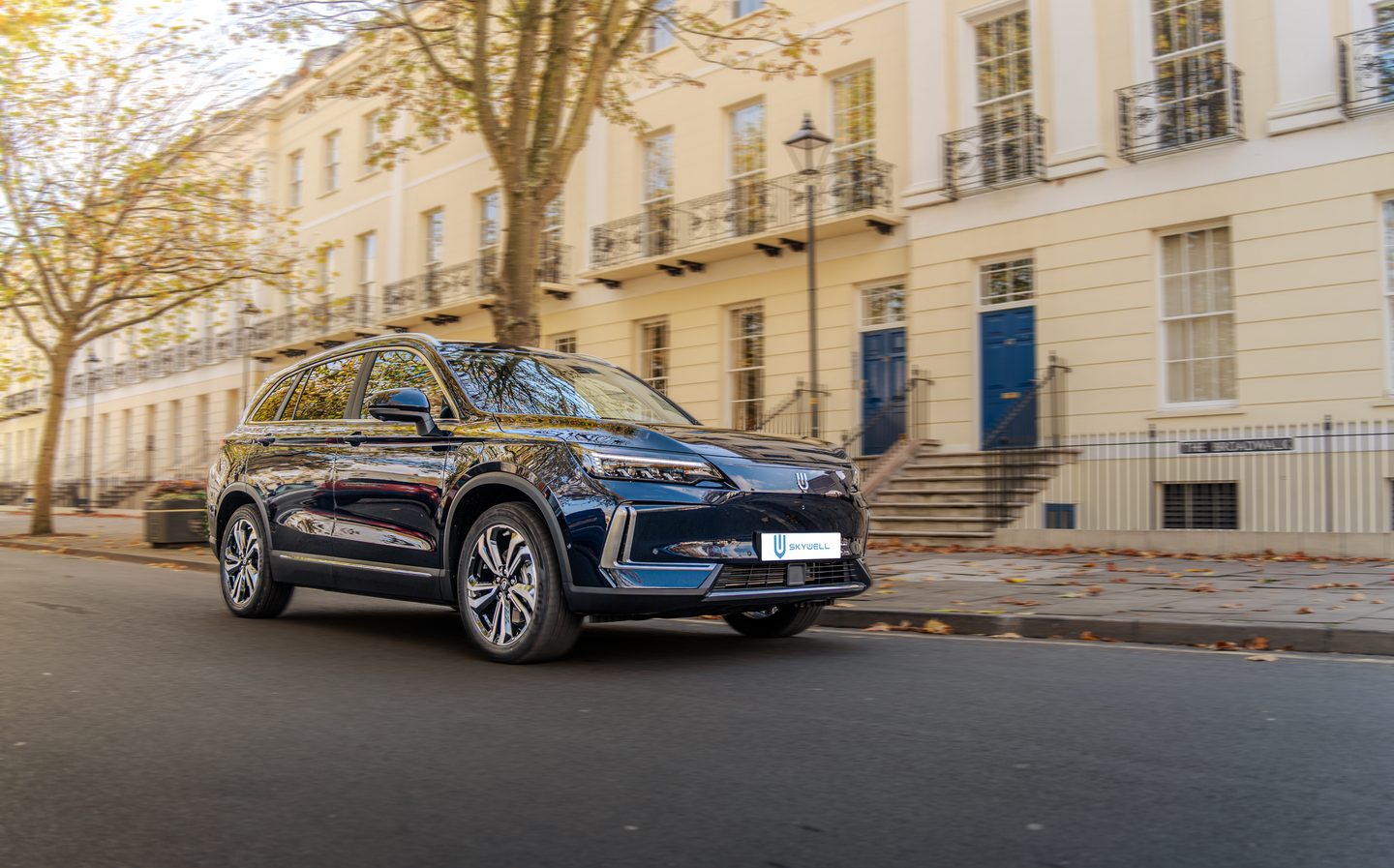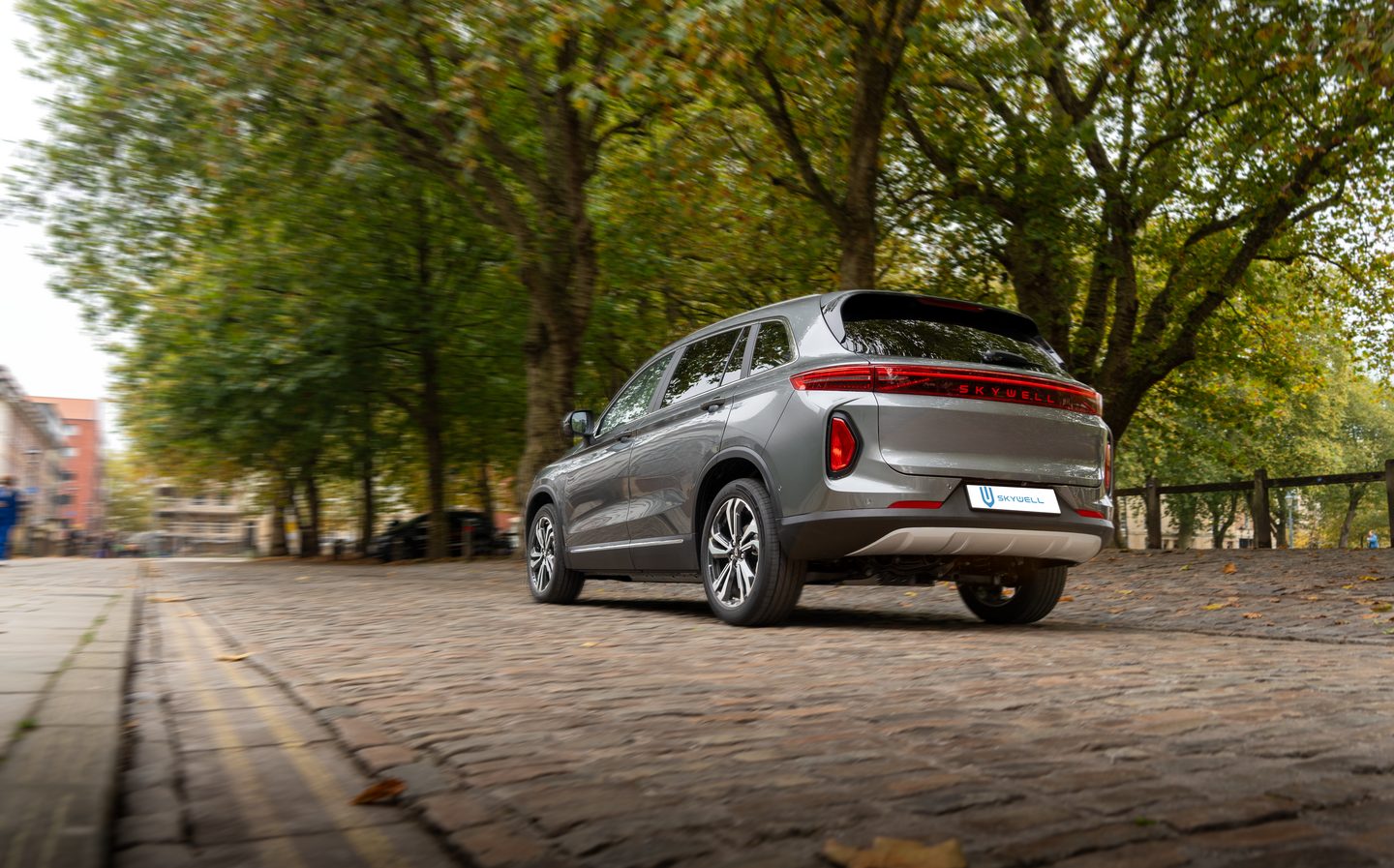Skywell BE11 2024 review: There’s no such thing as a bad car these days? Hold my beer, says this Chinese newcomer
‘Dire’ is being kind to this car’s handling
There’s an oft-repeated phrase in the car industry: “There’s no such thing as a bad car these days.” They vary in quality and attributes but the days of shockingly poor vehicles appeared to be over, which does make the business of writing engaging car review tricky. However, Chinese company Skywell has done me and my car journalist colleagues a massive favour, as, having sampled its new mid-sized electric SUV, I can comfortably describe it as the worst car I’ve driven in the 21st century. And by some considerable distance, too.
You might assume that this conclusion is some manifestation of rampant and misplaced xenophobia against the slew of manufacturers from China, which are currently inundating European car markets with product after bafflingly named product (Skywell’s first effort is called the BE11).
Yet nothing could be further from the truth — among all the Omodas and Zeekrs and BYDs and Nios and Jaecoos and GWM Oras and Xpengs are some good cars. Vehicles with plenty of promise and areas of appeal. It is not true to say these electric vehicles (EVs) are rubbish, because they’re emphatically not.
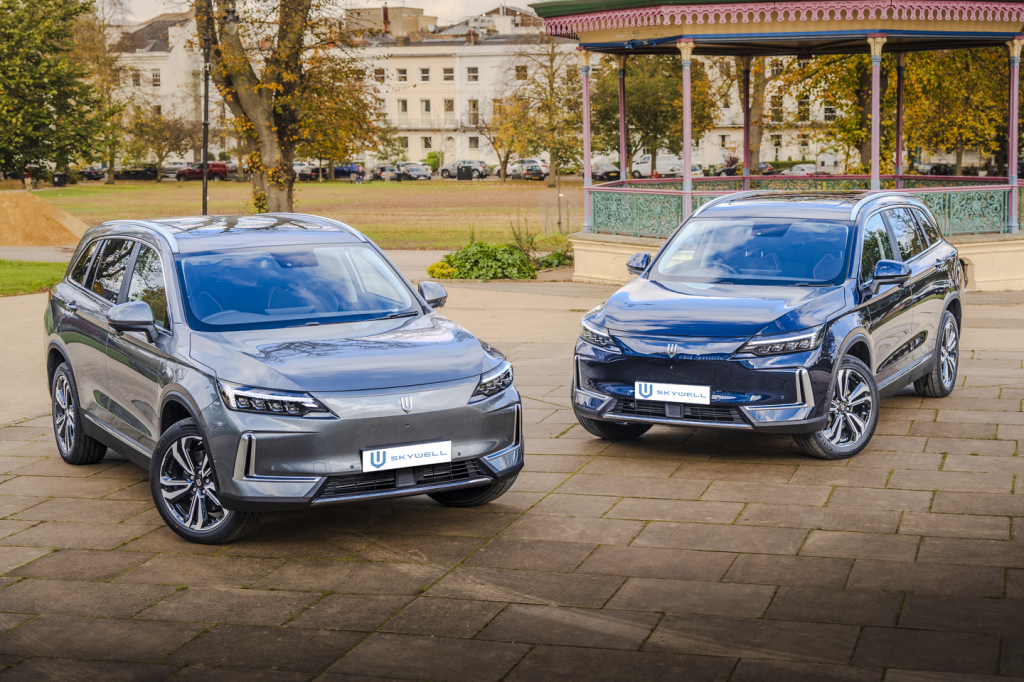
But into this mix comes Skywell, an all-new name from a company called Skyworth that previously specialised in television and other electronic goods, before a buy-out of the Nanjing Golden Dragon Bus Company, in 2011.
Skywell (its vehicles are marketed under the Skyworth name in its homeland, but not here), therefore has a background in commercial vehicles. It makes electric buses, electric lorries, electric construction machines and electric vans, and it now exports to 100 countries worldwide.
The BE11, however, is its first proper passenger car. That’s if you discount a 2017 experimental foray into the industry called the “Skywell MPV”, mind you, which was a rebadged product under licence from fellow Chinese firm Jinbei.
Even this new one, a midsized SUV with which the fledgling brand is ambitiously targeting the likes of the Nissan Ariya, Skoda Enyaq and Ford Mustang Mach-E, isn’t entirely Skywell’s confection. The electric motor, for instance, comes from BYD, a Chinese car company fast building itself some proper provenance in Europe.
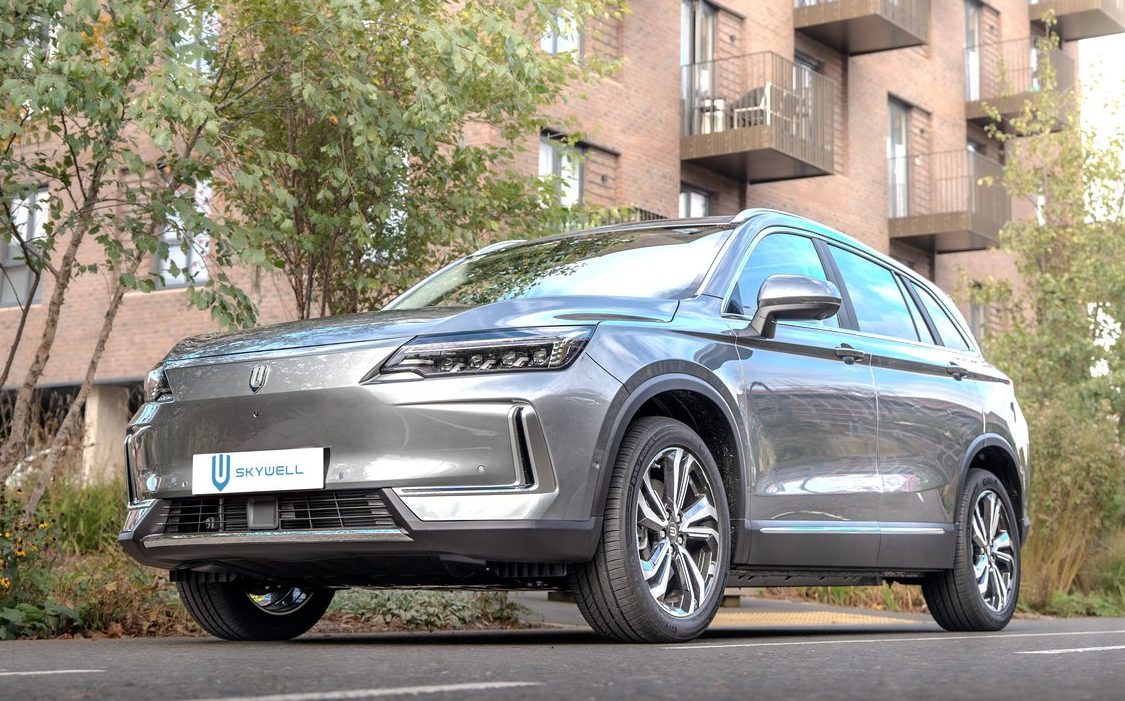
Strangely, the two battery packs in the Skywell BE11 are not sourced from BYD, as you might expect, given that BYD made its fiortune in battery tech, and its Blade battery units are well respected. Instead, the smaller pack in the Standard Range model, with a capacity of 72kWh, is from Funeng, while the longer-range 86kWh unit is sourced from Weineng. I’m going to stick my neck out and say that I guarantee you’ve heard of neither of those establishments before.
Interestingly, the Skywell SUV’s batteries both use lithium nickel manganese cobalt (NMC) chemistry, rather than the more commonly used lithium iron phosphate (LFP) make-up. On this score, and a few others, Skywell’s brave UK representatives talk a good fight. NMCs, they say, are less susceptible to cold weather, so you’re much more likely to get closer to the claimed 304-mile combined figure of the Long Range model in real-world driving than you would if its power cells were LFP.
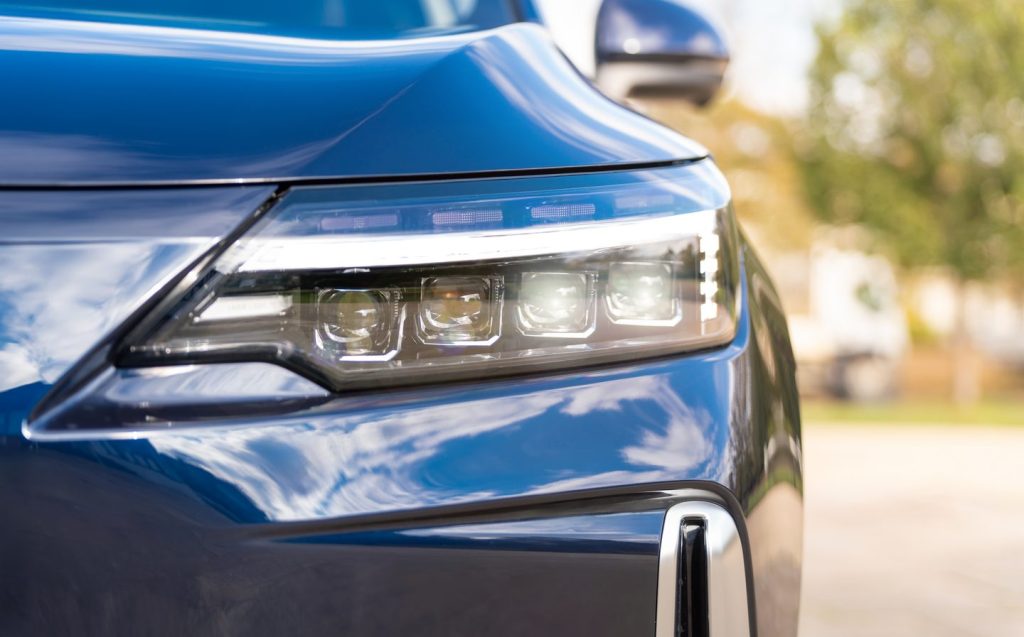
Similarly, NMC batteries are not as heavy as LFPs, so despite the fact the BE11 has two big battery packs available to it, the overall weight of the models is decently low – 1,880kg for the Standard Range and 1,930kg for the Long Range, when we’re used to talking about EVs of this size weighing well over two tonnes.
So far, so good. And there’s more that could be construed as positive. UK customers will all benefit from a generous seven-year, 100,000-mile warranty, as well as up to ten years’ worth of AA roadside cover, as long as they take their BE11 to a Skywell dealer annually for a service.
Then there’s the generous standard specification, with no cost options available whatsoever — not even metallic paints require extra outlay (although there are only three of them in a four-colour palette), there are no bits of equipment to add, and there’s just the one size of alloy wheel (19in).
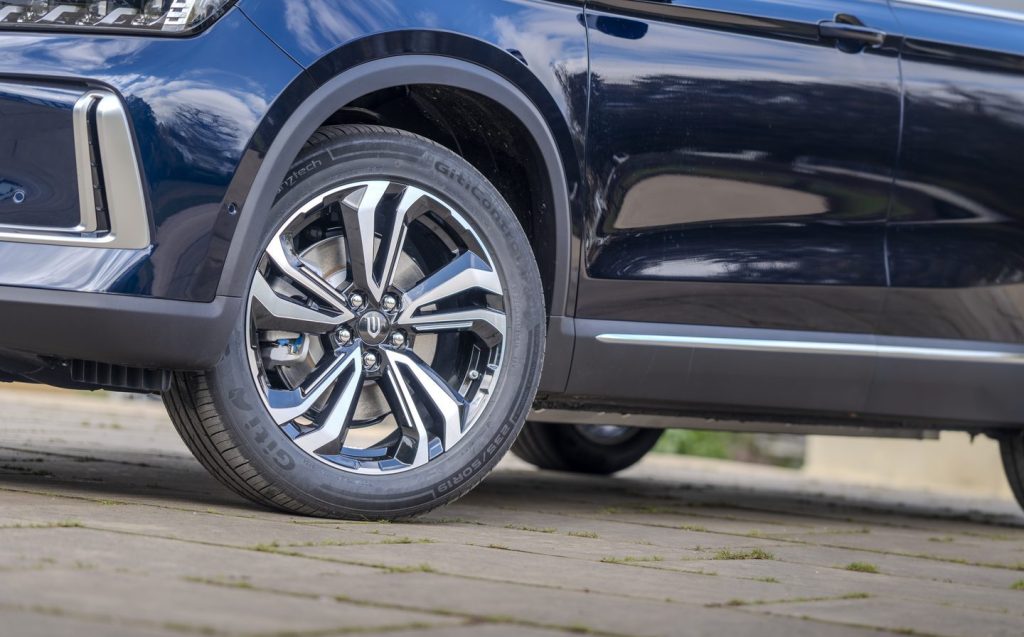
LED headlights, an opening panoramic roof, a powered tailgate with “kick to open” feature, 128-colour ambient lighting, wireless smartphone charging, climate control, cruise control, a 360-degree camera, an eight-speaker Metz sound system with subwoofer, Alcantara and leather-effect upholstery, and six-way electrically adjustable front seats are standard fit, among more.
As are a 12.3in digital instrument cluster and a 12.8in touchscreen for the infotainment, which supports wireless Apple CarPlay and Android Auto functionality.
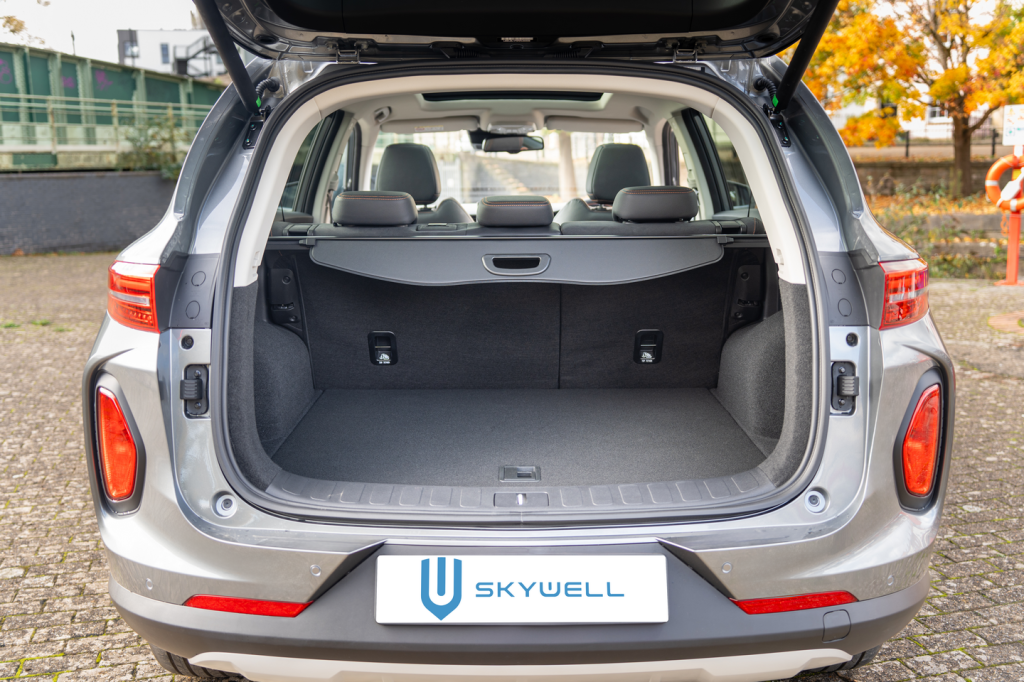
What’s more, there’s loads of legroom in the rear of the Skywell BE11, with a flat floor all the way through and enough space that three adults could sit across the rear bench. The boot holds 467 litres with all seats in use, rising to 1,141 litres with the 60:40 split-folding rear seats laid down.
Up front, material quality is fairly decent. There are patchy points, granted, and we doubt how much rose gold, if any, is genuinely used in the trim that bears its name, but the overall feel of most of the surfaces is not bad at all.
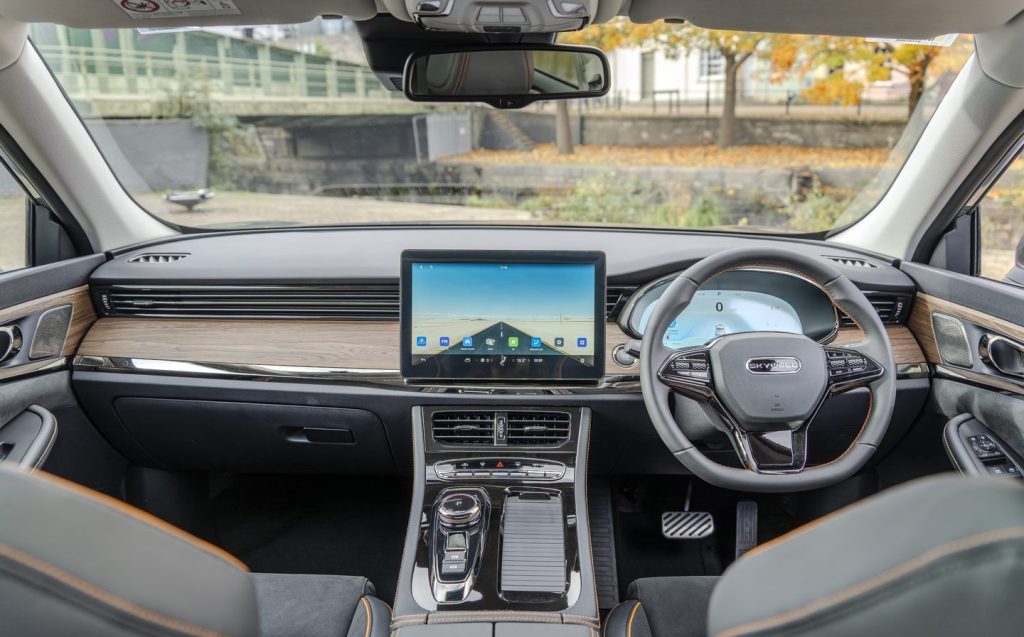
Nor is the responsiveness nor graphical clarity of the 12.8in infotainment screen, although it’s by no means perfect to use — some of the submenus are confusing and various control screens and icons are simply too small to easily tap on the move. The instrument cluster, meanwhile, is in no way configurable, save between switching it from a night-time blue-and-yellow appearance to a bright, glowing white screen that clearly would be too distracting in the dark.
And that, dear readers, is where what little positivity I can summon about the Skywell BE11 ends. Because, from hereon in, its case begins to fall apart badly. And ultimately collapses completely.
The standard spec may indeed be generous but there are bizarre gaps in it that you cannot fill no matter how much cash you throw at the problem.
For a start, heated seats and a heated steering wheel permanently elude the Skywell buyer. More significant is that battery charging times are uncompetitive. The BE11’s maximum charging speed is 80kW on a DC charger, which is slow for something with a battery that’s considerably larger than 50kWh. Skywell quotes a 45-minute speediest replenishment time but if you peruse the data more carefully, that’s for a 20-70 per cent top-up; every other manufacturer gives you data for 10-80 per cent. So, figure on an hour being your best rapid charging time.
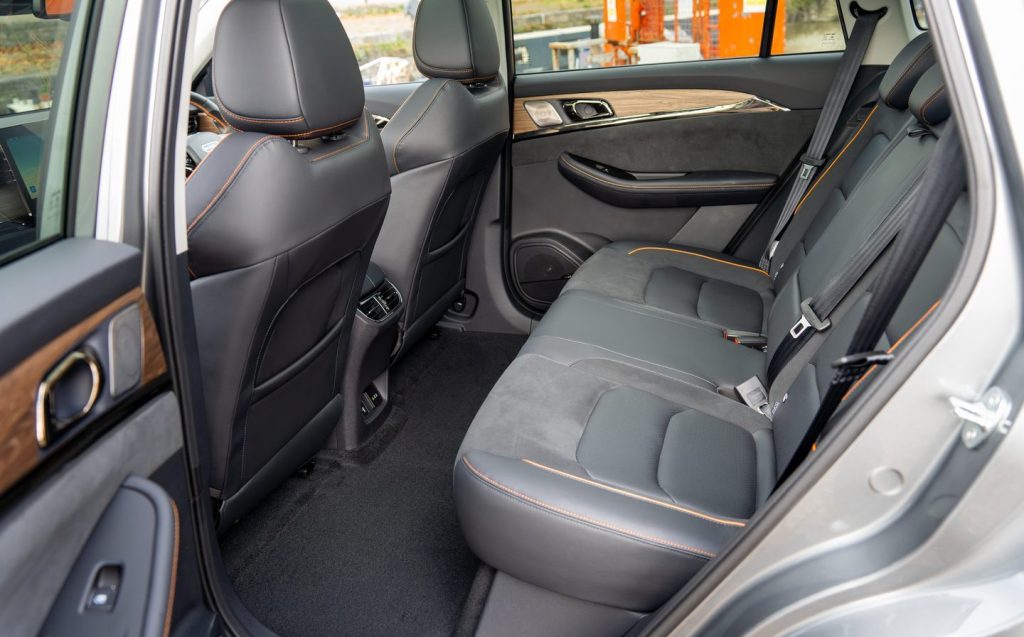
Those rear seats are also not as versatile as they seem. The backrests do fold completely flat… but only after you’ve moved the base of the bench out of the way, which is a two-handed job and requires that a white, plastic electrical connector beneath the seats be disconnected first. Try to fold the seats with the bench in place, and they only go forward about 70 per cent of the way.
None of this, though, would be insurmountable if the BE11 was OK to drive. It wouldn’t even need to be memorable, or even good; just not terrible. Sadly, I have to report that this is the most ill-resolved, incoherent car I’ve ever had the misfortune to drive.
It begins with the way the Skywell transmits its modest power (201bhp) and torque (twisting force, in this case 236lb ft) outputs to the road. Or rather, doesn’t. Even with the over-zealous traction control enabled, the BE11 will spin its front wheels at the slightest provocation. It does so out of junctions, it does it around roundabouts, it does it if you dare to accelerate on even a moderately bumpy road in a straight line… everywhere, basically.
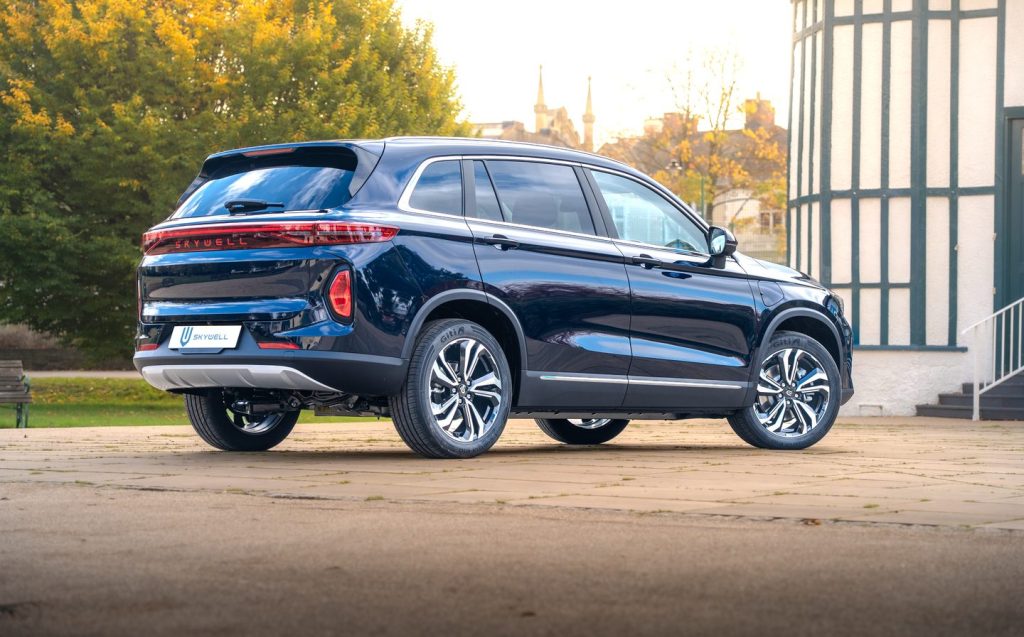
Moving on to the suspension, the Skywell has an incredibly loose and sloppy set-up. You might think with its deep-sidewall tyres, and soft springs and dampers, that the ride would be comfortable, yet it’s anything but. In the wake of only moderate compressions and lumps in the road, the BE11 flops and wallows about the place, while it will dive forward alarmingly if you brake too hard. The shell of the car moves about atop its chassis like a waterbed mounted on ball bearings, unless the road you’re on is billiard-table flat, and that is not a pleasant sensation at all. UK roads are not billiard-table flat.
With such poor suspension resolve, any assessment of the handling is best avoided. Roly-poly doesn’t even cover how much the Skywell leans from side to side through the bends, while the lack of traction means you can’t hustle it through corners even if you wanted to.
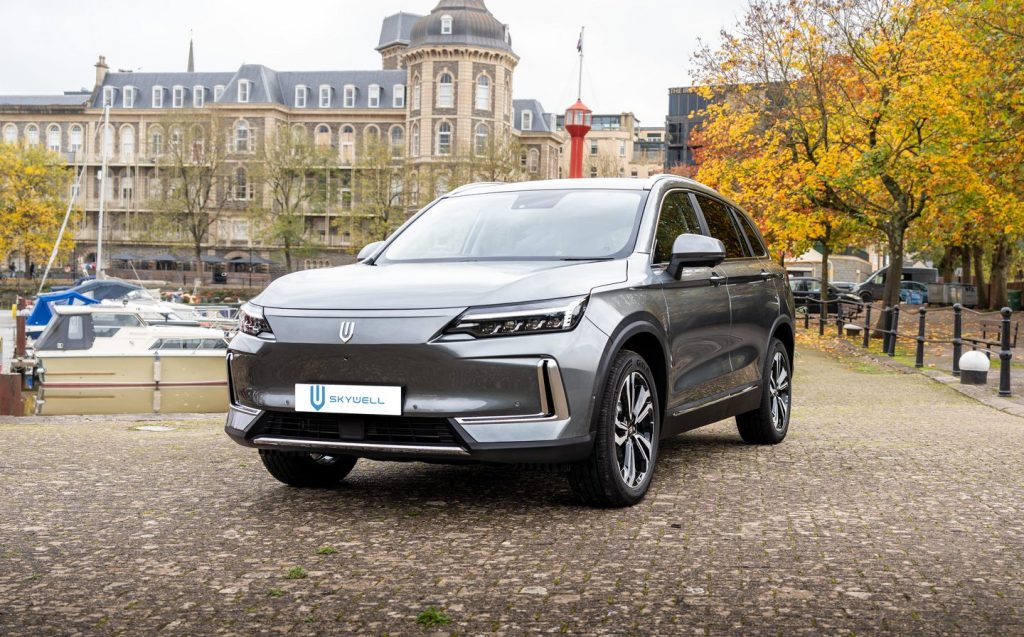
Sports-car handling is not in the BE11’s remit, you might say, but there’s even worse news on the steering and brakes, which are – frankly – awful.
On the latter score, the pedal feel is horrid. You can press it all the way down to the floor, as you might in a conventional car which has boiled all its brake fluid away, and there’s a nasty springy sensation to the pedal when you do. And when the Skywell’s on the move, there’s a good inch or so of spongy, dead travel at the top of the brakes’ action, and when the discs do eventually bite there’s next to no feel of what they’re doing.
That’s in the regular mode — there’s a Sport setting, which isn’t the easiest to access and activate through the touchscreen’s menus, and that gives them a bit more pedal weight, but also a horrible, snappy sensation as you bring the car to a halt, which makes you look like a nervous learner who can’t modulate the brakes properly.
Also, adjusting the regenerative braking is a mightily fiddly process, with sliding scale that goes from 0-100 per cent — and yes, every number in between. One hundred different levels regen, when at most you need three… and yet not one of them elicits single-pedal driving from the BE11, not even at 100 per cent. It’s just bonkers.
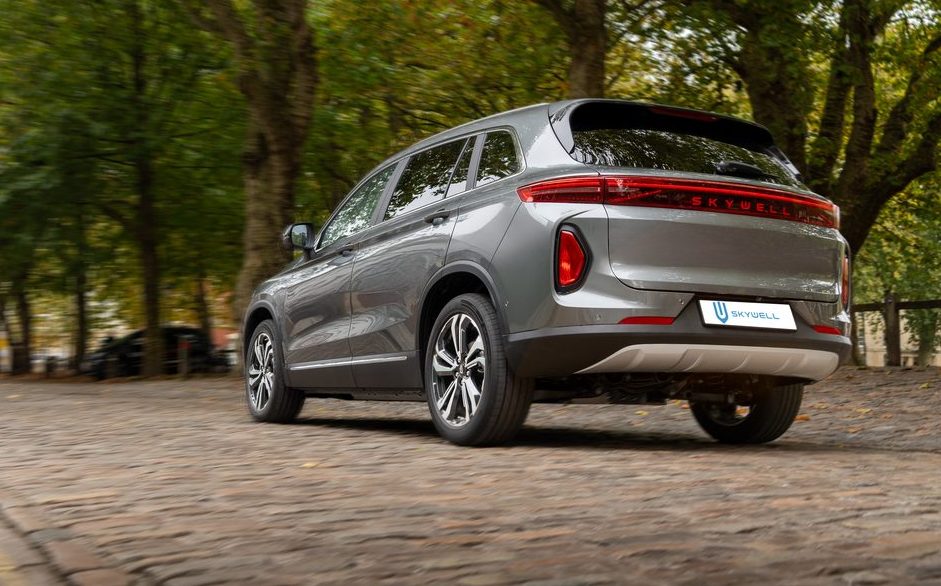
The steering, though, is the most alarming aspect of this car. Three settings are labelled Normal, Comfort and Sport, but there’s precious little weighting and absolutely zero feel to any of them. Sport is just about passable on the road, but the lighter-than-air Comfort mode is a joke — in this setting, on a narrow two-lane road with a white line down the middle, you can turn the wheel almost a quarter of the way in each direction and the BE11 won’t even leave its lane.
Speaking of which, lane-keep assist isn’t fitted to this car. At all. There are a few driver-assist features, such as a speed limit warning and driver monitoring, but the Skywell looks like it is on course for a terribly low Euro NCAP safety score when it is eventually put through its paces.
The traction, steering and handling issues — and those of rolling refinement, which is also way off prevailing standards in this sector with elevated tyre and wind noise evident even at 50mph — might be improved if Skywell wasn’t being so ridiculously patriotic and fitting the BE11 with tyres from a company that makes such items for Chinese trucks.
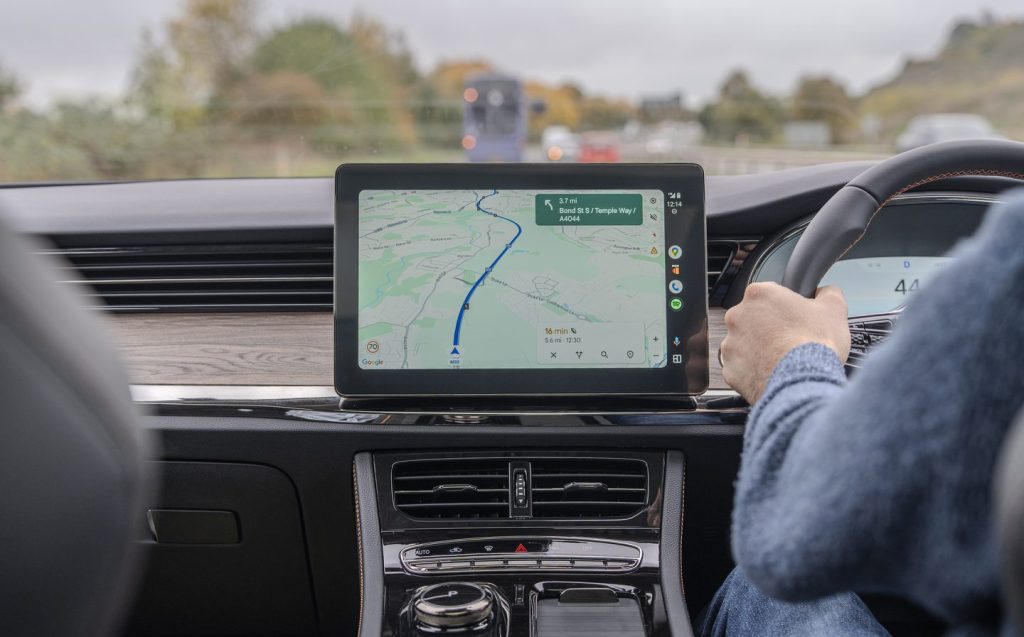
What might work for some commercial vehicle hauling aggregates in a remote province of Asia is in no way the right rubber for a passenger car in Europe. Whatever (checks notes) Giti GitiControl P10 tyres’ strengths are, I’ve not found them. And the BE11 might be improved in various dynamic concerns if it were merely fitted with some Michelins or Goodyears or similar.
However, it is the combination of the preposterously light steering, the dreadful brakes, the mushy suspension and the grip-free tyres that can, in the wrong situation, make the BE11 feel potentially dangerous. In icy, cold, slippery conditions — such as the day we drove the car — actually muscling it through a few bends at low speeds felt hair-raising in the extreme.
And it is for that reason that no amount of positivity from Skywell’s UK team, nor talk of all the equipment you get for the money, can overcome the way this car drives. It is really, really bad in all kinematic departments. Shocking, in fact, that cars can still be signed off like this in the modern era.
As I’ve alluded to price, is the BE11 cheap to buy and/ or lease? Well, yes, in isolation and if you genuinely believe in any way it is a true rival for something as polished and excellent as a Skoda Enyaq (it so painfully isn’t), then numbers of £36,995 for the Standard Range and £39,995 for the Long Range look tempting. Residual values are also claimed to be 43 per cent after three years, which seems optimistic and should lead to super-affordable monthly lease costs.
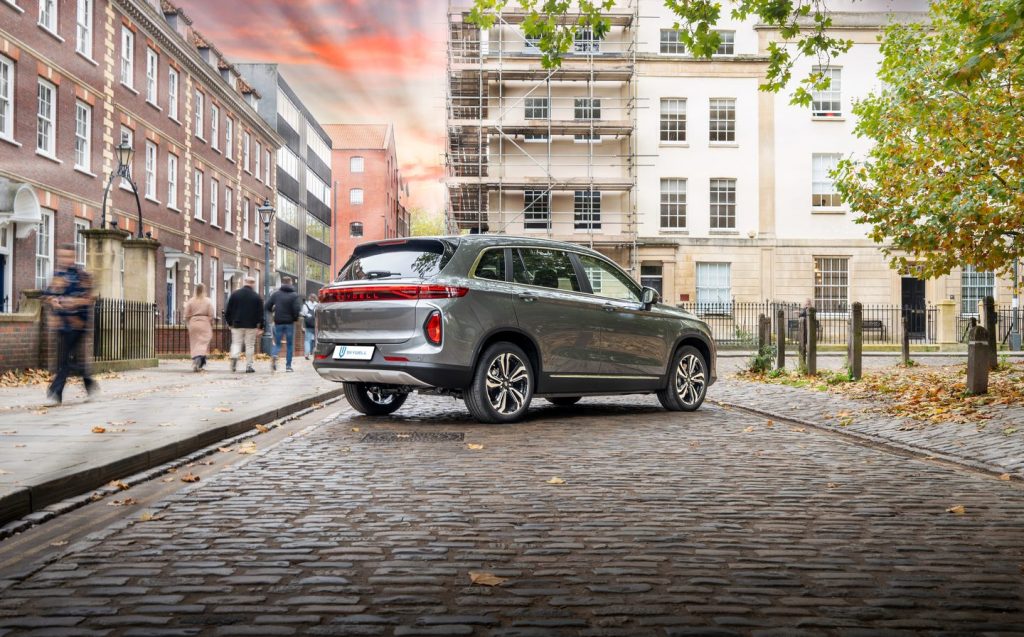
But if you take the package as a whole, I’d contest the Skywell BE11 is not nearly cheap enough. A load of equipment and plenty of rear legroom does not make up for a massively sub-par driving experience, a notable lack of some key safety gear, and the unknown quantity of the company in general.
We wish Skywell all the best — and it will need to hugely increase its ten-dealer-strong network in the UK to even begin to make inroads here, either fleet or private — yet on this evidence, the company has a lot of work to do to get its products up to anywhere near the standards required of EVs in the European market. Have a look at the BE11 by all means, out of curiosity more than anything else, but whatever you do, don’t buy one. Literally every other electric SUV option in this class is better.
Chinese carmakers
Skywell is a Chinese carmaker owned by electronics giant Skyworth Group, with headquarters in Nanjing, China. Its vehicles are distributed in the UK by Innovation Automotive.
Related articles
- If you found our review of the Skywell BE11 interesting, you might like to read a review of a decent Chinese car, the new BYD Sealion 7
- Or check out the best-selling new cars of 2024 in the UK
- Here’s what Will Dron had to say about the BYD Dolphin
Latest articles
- Lewis Hamilton wants to design a modern day Ferrari F40 with manual gearbox
- Dacia Bigster 2025 review: The ‘anti-premium’ family SUV that punches above its weight
- Your car’s worn tyres could be being burnt illegally in India, investigation reveals
- Open-top 214mph Aston Martin Vanquish Volante is world’s fastest blow-dry
- F1 2025 calendar and race reports: The new Formula One season as it happens
- Alfa Romeo Junior Ibrida 2025 review: Hybrid power adds an extra string to crossover’s bow
- Top 10 longest-range electric cars: all with over 400 miles per charge (officially)
- Renault 5 Turbo 3E ‘mini supercar’ confirmed with rear in-wheel motors producing 533bhp … and insane levels of torque
- British firm Longbow reveals ‘featherweight’ electric sports cars with 275-mile range


